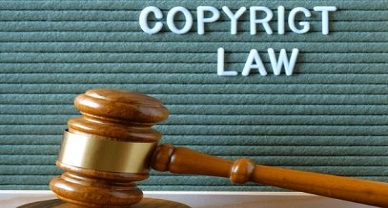Positive Aspects of the Information Technology (Intermediary Guidelines and Digital Media Ethics Code) Rules, 2021
INTRODUCTION
At a cursory glance, the much-awaited IT rules are likely to seem appropriate, but an in-depth study of the same provides a clear image of the underlying intricacies. However, let us first consider the positive aspects of these rules, then we would delve deep into the challenges and the unaddressed issues.
GRIEVANCE REDRESSAL MECHANISM
In order to ensure adherence to the delineated code of ethics, the rules lay down a three-tier grievance redressal mechanism primarily based on self-regulating principles.[i] Level I of the Grievance Mechanism provides that any person aggrieved with content showcased on the OTT platform can lodge his grievance with the grievance officer, as appointed by the concerned publisher. The grievance officer must be based in India and shall act as the nodal point of interaction between the Ministry (MIB), aggrieved complainant, and self-regulating body.[ii] Moreover, the rules also provide for a time limit to be adhered to by the grievance officer. As per the rules, he must acknowledge receipt of the complaint within 24 hours and dispose of it of within 15 days.[iii]
If the grievance office fails to resolve the grievance within the stipulated time limit, then the grievance shall be escalated to Level II providing for the self-regulating body or self-regulating bodies as established by the publishers or their association.[iv] Such a body has to register itself with the MIB, and the MIB shall take care that the body formulated is in accordance with the rules and agree to perform the functions as laid down by the rules.[v] The body has the power to warn, censure, admonish or demand an apology or disclaimer or reclassify the content, make appropriate modifications, and edit synopsis.[vi] In case the body satisfies itself with that there is a need to take appropriate action to delete or modify the content as it is likely to disrupt the public order by providing an incitement for cognizable offences, then it can also refer the case to the third tier.[vii]

Finally, the Third Level provides for an Oversight Mechanism in which there shall be an inter-departmental committee constituted by MIB for hearing appeals arising out of the decision taken by the self-regulating body, or where the self-regulating body fails to resolve the grievance within the stipulated time, or if a complaint is referred to it by the MIB or self-regulating body.[viii] In addition to the powers similar to self-regulating body, this committee will have the power to take down objectionable content and even take suo motu cognisance of any issue pertaining to an OTT release. The joint secretary or an officer of above joint secretary rank of MIB shall be the Chairman of the committee.[ix]
Rule 16 provides emergency powers to MIB in cases where ‘no delay is acceptable’. As per the rules, the secretary can issue directions for blocking online content without giving them an opportunity of being heard.[x] Thus, this way, the rules endeavour to provide a robust mechanism for regulation of intermediaries and OTT platforms.
OTHER POSITIVE ASPECTS
As per the Rules, the intermediaries are required to provide the information asked by any specialized government authorities for the prevention, investigation, detection, and prosecution of any cybercrime. Further, the intermediaries have to abide by the laws and are restricted from hosting any unlawful content in contravention to those legislations. Another positive aspect in the rules is that, in case, any content in contravention to the laws is displayed then they are required to remove it within 36 hours of receiving an order.
Another significant aspect of due diligence is the grievance redressal mechanism, which requires mandatory appointment of a Grievance Redressal Officer (GRO) based in India and whose contact details must be easily accessible to the public. Moreover, the guideline will also make the online platform safer for women by increasing free and fair expression with minimised intimidation. The provision of retaining the information is also increased to 180 days from 90 days according to the Information Technology Rules, 2011. It will ensure due compliance for a long period of time.
Furthermore, the rules came up with the Code of Ethics that provides for self-classification of content by the OTT platforms, which was an urgent need of the hour. Instances such as the killing of a girl by her lover after getting inspired by ‘Munna Bhaiya’ – a character in Mirzapur web series streamed by Amazon Prime Video,[xi] bludgeoning of grandmother by a class 12 boy after watching the online streaming TV serials,[xii] gang rape of a ten years old girl by eight minors and one 18 years old boy after watching a pornographic content streaming on OTT platforms,[xiii] are enough in numbers to substantiate the claim that streaming content on the OTT platform was playing a crucial role in adulterating the mindset of the individuals.
Furthermore, owing to India’s multi-racial and multi-religious context, the rules suggested an exercise of due caution and discretion to the OTT platforms while featuring the activities, beliefs, practices, or views of any racial or religious group. The rules also provided a time stipulated three-tier robust grievance redressal mechanism (from the perspective of a consumer), which was much needed as the aggrieved persons have to raise their grievance in front of different authorities or file a petition in different courts, which used to consume their considerable amount of time and money. Moreover, due to over-burdened courts, the Hon’ble benches used to take significant time in considering the petitions, which already used to make the content disseminated to a major chunk of the population in the meanwhile due to the presence of high-speed data and easily accessible platforms.
Furthermore, the rules also provide for the display of classification specific to each content or program prior to watching the program, together with a content descriptor informing the user about the nature of the content to facilitate the user in making an informed decision.[xiv] Inclusion of access control mechanisms, including parental controls for the content rated above U/A 13+, is a much-appreciated step as it provided parents a method to keep a check on the content watched by their children and restrict the inappropriate content.
Moreover, the Code of Ethics also mentions a clause stating platforms shall, to the extent feasible, take reasonable efforts to improve the accessibility of online curated content transmitted by it to persons with disabilities through the implementation of appropriate access services.[xv] However, this point is yet hardly discussed anywhere. This clause is also a much-appreciated one as it not only provides a level playing field to the person with disabilities but shows that the government is also concerned with providing the best to them.
Author:– Kaustubh Kumar, in case of any queries please contact/write back to us at support@ipandlegalfilings.com or IP & Legal Filing.
REFERENCES
[i] Information Technology (Intermediary Guidelines and Digital Media Ethics Code) Rules, 2021, Rule 9(3).
[ii] Information Technology (Intermediary Guidelines and Digital Media Ethics Code) Rules, 2021, Rule 11(2)(a), 11(3)(b).
[iii] Information Technology (Intermediary Guidelines and Digital Media Ethics Code) Rules, 2021, Rule 10.
[iv] Information Technology (Intermediary Guidelines and Digital Media Ethics Code) Rules, 2021, Rule 12(1), 12(3).
[v] Ibid.
[vi] Information Technology (Intermediary Guidelines and Digital Media Ethics Code) Rules, 2021, Rule 12(4).
[vii] Information Technology (Intermediary Guidelines and Digital Media Ethics Code) Rules, 2021, Rule 12(4)(e).
[viii] Information Technology (Intermediary Guidelines and Digital Media Ethics Code) Rules, 2021, Rule 13, 14.
[ix] Information Technology (Intermediary Guidelines and Digital Media Ethics Code) Rules, 2021, Rule 13(2).
[x] Information Technology (Intermediary Guidelines and Digital Media Ethics Code) Rules, 2021, Rule 16.
[xi] Tauseef, who was harassing and forcing Nikita to convert to Islam, decided to kill her after watching web series ‘Mirzapur’: Report (March 26, 2021), OpIndia, https://www.opindia.com/2020/10/nikita-murder-case-tauseef-inspired-by-mirzapur-web-series/.
[xii] Inspired by Tv crime serials, Class 12 boy bludgeons grandmother to death in Punjab, sets body on fire, (April 14, 2021, 10:40 AM), India TV News, https://www.indiatvnews.com/crime/inspired-by-tv-crime-serials-class-12-punjab-boy-bludgeons-grandmother-to-death-sets-body-on-fire-697614.
[xiii] Sunil Rahar, 18-yr-old, 8 minors held for gang raping Class-5 girl in Rewari village (June 10, 2021, 01:24 AM), Hindustan Times, https://www.hindustantimes.com/cities/chandigarh-news/18yrold-8-minors-held-for-gang-raping-class-5-girl-in-rewari-village-101623268390215.html.
[xiv] Information Technology (Intermediary Guidelines and Digital Media Ethics Code) Rules, 2021, Annexure II (C).
[xv] Information Technology (Intermediary Guidelines and Digital Media Ethics Code) Rules, 2021, Annexure II (E).


